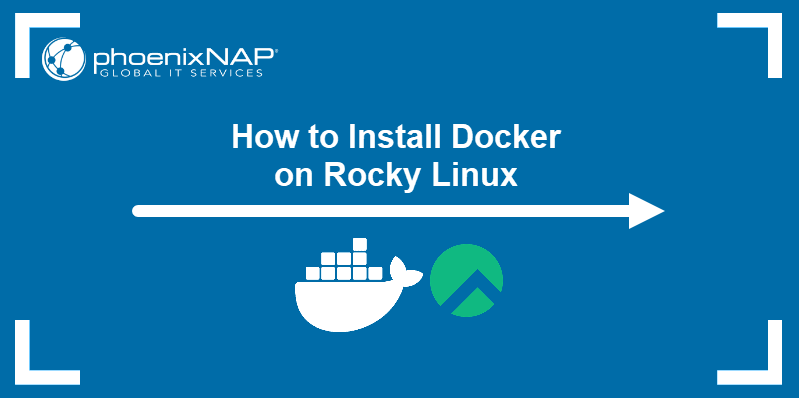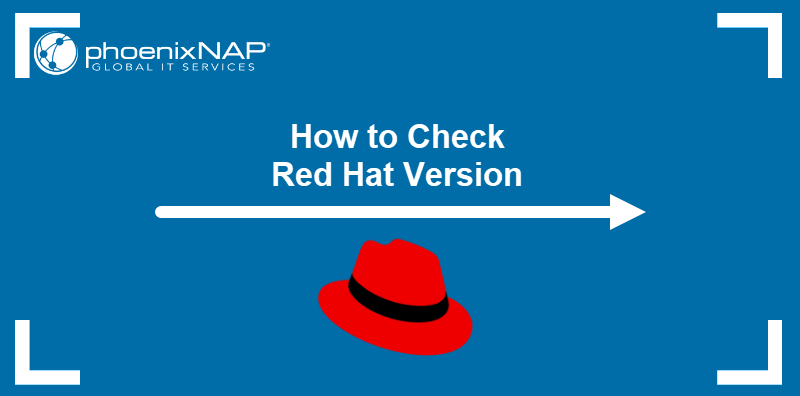Rocky Linux is a relatively new, free, and open-source operating system based on the RHEL source code. It has been widely touted as one of the best replacements for CentOS.
In this article, you will learn how Rocky Linux stacks up against CentOS and whether it truly is a great CentOS alternative.

Important: This article focuses on comparing Rocky Linux and CentOS 7 and 8. For the purposes of this comparison, we will disregard CentOS Stream as it is not a viable alternative to CentOS Linux.
CentOS
CentOS Linux is an open-source Linux distribution based on the RHEL (Red Hat Enterprise Linux) source code. It was a downstream project, which means that it got all RHEL features a few months after they were incorporated into the RHEL distro. However, unlike RHEL, CentOS is completely free.
After discontinuing further development of CentOS Linux, Red Hat created CentOS Stream as a rolling release for CentOS. The early end-of-life was announced for December 2021, cutting it short by eight years. The only option left for users is CentOS Stream, which is unsuitable for production environments due to a lack of stability.
Rocky Linux
Gregory Kurtzer, one of the original creators of CentOS, founded Rocky Linux in 2021 after Red Hat announced that CentOS would be discontinued. The goal was to create a fully open-source Linux distribution based on RHEL source code and fill the gap left by CentOS.
The result was an enterprise-ready, stable Linux distribution developed by and for the community. Rocky stepped in, offering everything that CentOS was, at no cost and with a 10-year lifecycle for each release.
Rocky is a downstream distribution that gets all the features of RHEL after they are tested and adopted in RHEL. This feature makes it an ideal option for production servers as it guarantees stability and performance.
Note: Learn how to migrate CentOS 7 to Rocky Linux 9.
Rocky Linux vs. CentOS: Understanding the Difference
Although Rocky Linux and CentOS are based on RHEL source code and aim for 100% bug-for-bug compatibility with RHEL, there are differences.
The sections below compare the two operating systems and showcase significant differences and similarities:
Architecture
Both distributions are based on RHEL and compatible with the Red Hat Enterprise binary code. This compatibility guarantees stability and performance, the key RHEL features. However, they differ slightly in terms of the architecture they support:
- The latest Rocky Linux version 9.1 currently supports x86-64, aarch64, ppc64le, and s390x architectures.
- CentOS version 8 supports x86-64, ARM64, and POWER8.
- CentOS 7 unofficially supports community-maintained ppc64, ppc64le, Arm32, Arm64, and i686 architectures.
Creator
Gregory Kurtzer founded the Caos Linux project, which later became the CentOS Project in collaboration with Rocky McGough. The goal was to create a community-managed distribution of RPM-based Linux, similar to Debian for dpkg.
After learning about Red Hat's decision to discontinue CentOS, Gregory Kurtzer announced that he would start Rocky Linux, a RHEL fork with the same goal as CentOS. The name Rocky Linux is a tribute to the late co-founder of CentOS, Rocky McGough.
Support
CentOS 7 and 8 are the final releases of CentOS Linux and will not receive updates or support. CentOS 7 will only receive maintenance updates until its EOL date, June 30, 2024. Thus, the official support for CentOS has ended, and most users have already started looking for a replacement. CentOS Stream is still receiving updates, but it isn't a viable replacement for a production-ready OS.
On the other hand, CIQ, the official company behind Rocky Linux, provides commercial support while the forums are being populated as the number of users increases. Rocky Linux forums offer community support for any potential issues. Additionally, several other companies provide commercial support for Rocky Linux.
Community
CentOS was created as a free, community-developed Linux distribution and became a synonym for stability and enterprise-grade operating systems. The CentOS Linux community is still active; however, Red Hat stated it would no longer develop CentOS Linux since it would conflict with its CentOS Stream plan.
The community can continue using the RHEL open-source code to build packages. However, without official support and a CentOS brand focused on CentOS Stream, it is likely the community will decrease.
On the other hand, Rocky Linux is becoming a popular replacement for CentOS. Its forums allow users to discuss events, provide help, or obtain more information on new releases. The number of Rocky users is rising, resulting in a thriving community actively involved in developing the OS, just as it was with CentOS.
Stability
CentOS Stream is based on the RHEL development branch and is always a minor version ahead of RHEL. Therefore, CentOS Stream uses a rolling release model rather than point releases, which can lead to stability issues. This rules it out for organizations running mission-critical servers.
On the other hand, Rocky Linux focuses on what CentOS used to be known for: stability and performance. Stability is ensured by being downstream of RHEL and by building releases using code from the upstream RHEL version. This guarantees the same stability, performance, and app compatibility as RHEL and CentOS Linux.
Each Rocky Linux release comes with a 10-year support lifecycle, unlike CentOS Stream. The longer lifecycle and official support for Rocky Linux imply better support for new apps and increased stability.
Security
The main CentOS security feature was Security-Enhanced Linux (SELinux). This feature provides access control policies for various processes and files, creating multi-level security protection. SELinux is enabled by default on CentOS, Rocky Linux, and RHEL to provide an extra layer of security for the system.
CentOS Stream is less secure than CentOS Linux and RHEL because Red Hat announced that it would address security issues in CentOS Stream after they are resolved in the current RHEL release.
Rocky Linux also uses SELinux to implement a robust MAC (Mandatory Access Control) architecture. MAC allows Rocky to create a containment system by separating information confidentiality and integrity. There are no superusers, and there is no traditional rights system approach.
Use Cases
CentOS Linux stood out as a valid choice for web hosting. According to a W3Tech survey, CentOS was the third-most-popular Linux OS for web servers. Additionally, CentOS Linux was also chosen over Scientific Linux in the scientific community. The particle physics and accelerator laboratory Fermilab announced in 2019 that they would use CentOS 8 instead of Scientific Linux 8.
Moreover, CentOS Stream is still an excellent choice for novice developers. It is free and offers a great opportunity to study for a Red Hat certificate or use as a sandbox before deploying RHEL.
Rocky Linux is now popular and used in the same cases as CentOS was before. Its reliability and performance make it a fantastic option for server operating systems and web hosting. Additionally, Rocky Linux is suitable for hyperscale, cloud, and high-performance computing.
Being cost-effective and providing all RHEL features for free makes Rocky suitable for all medium enterprises and even for private use.
Note: Become a Linux expert by understanding essential Linux commands. Download a free cheat sheet to save it for future reference.
Pros and Cons of CentOS and Rocky Linux
Refer to the lists below for the pros and cons of CentOS and Rocky Linux.
CentOS
Pros
- A stable OS with no need to update apps often.
- Reliable and scalable.
- User-friendly.
- Works well as a development system, with high availability of development packages and 3rd-party compatibility.
- Great for high-availability clustering with native DRBD packages.
- Free and open source.
Cons
- Discontinued without future support.
- The lifetime for CentOS 7 is until 2024, while CentOS 8 support ended in December 2021.
- CentOS Stream is now the focus of development.
- CentOS Stream gets untested updates since it is on the upstream (development) branch.
Rocky Linux
Pros
- The system focuses on stability with no unnecessary updates.
- It has the same core team as CentOS. They know what CentOS users appreciated from the start and incorporated it in Rocky.
- Rocky Linux can be slimmed down to a bare minimum system, allocating maximum computing power to business-critical applications.
- Rocky Linux is fully compatible with RHEL.
- Being open source ensures the OS is free and community-developed, benefiting all users.
Cons
- The infrequent updates that guarantee stability may also be considered a disadvantage because the latest software is unavailable.
- Rocky is still a young OS, so there is no detailed documentation or extensive experience to evaluate how good it is.
- The future of funding Rocky Linux is uncertain. Time will tell if support remains or backs out.
Is Rocky Linux a Replacement for CentOS?
Rocky Linux is a free Linux distribution based on Red Hat Enterprise Linux and intended to replace CentOS. The OS is stable and user-friendly, but we cannot say for sure if the community will accept it as a valid successor for CentOS.
Note: Read our article comparing Rocky Linux to AlmaLinux, another candidate for replacing CentOS.
Just like CentOS, Rocky Linux is a RHEL clone, and many large and wealthy corporations are already supporting it. Its success depends solely on existing CentOS users and whether they choose to embrace the new system. However, so far, it seems like a promising option.
Conclusion
After reading this comparison article, you should better grasp the differences between Rocky Linux and CentOS.
If you decide to move from CentOS, try installing Rocky Linux on VirtualBox or VMware.


